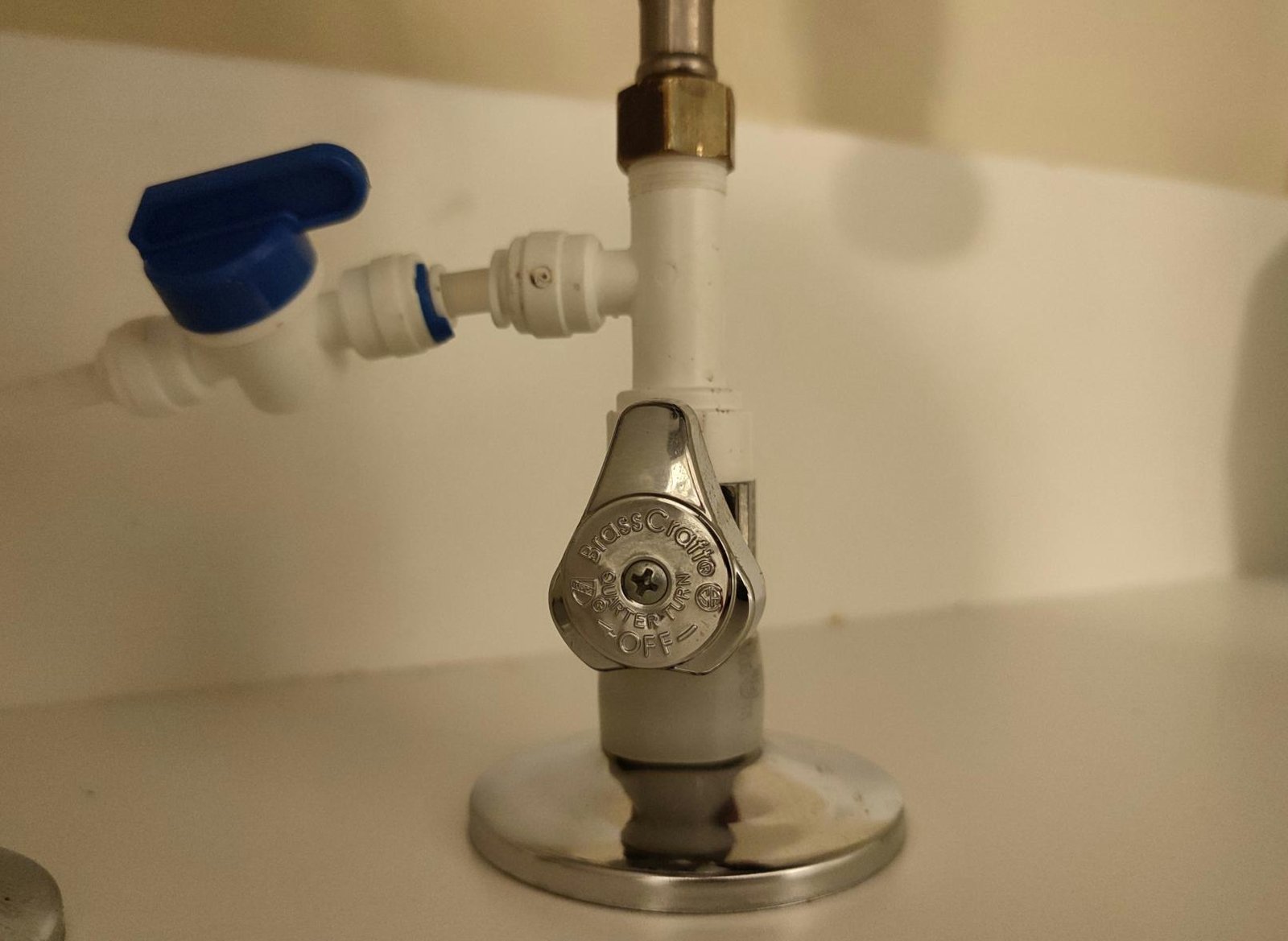Introduction to Toilet Flush Valves
Toilet flush valves play a crucial role in the overall functionality of toilet systems. These essential components are responsible for controlling the flow of water from the tank into the bowl during a flush. Understanding the mechanics of toilet flush valves is vital for effective maintenance, ensuring optimal performance, and addressing any issues that may arise over time.
The primary function of a flush valve is to facilitate the proper release of water when the toilet is flushed. Upon activation, typically through a handle or button, the flush valve opens to allow water stored in the tank to pour into the toilet bowl rapidly. This swift influx of water generates the necessary force to remove waste and refill the bowl afterward. The water then refills the tank through the fill valve, making the toilet ready for subsequent uses.
In many modern toilets, flush valves come equipped with a flapper or a similar mechanism that acts as a seal to prevent water from leaking out of the tank when not in use. As one becomes familiar with the components of toilet flush systems, recognizing the signs of wear and potential malfunction becomes simpler, enabling timely repairs that can extend the life of the toilet.
Knowledge of how flush valves operate also aids in troubleshooting common issues, such as weak flushes or frequent toilet running. These issues often stem from wear on the flapper chain, improper water levels, or sediment buildup affecting valve performance. Understanding the mechanics and importance of flush valves will help homeowners manage their bathroom fixtures more effectively, leading to a more efficient and resource-conserving household.
Components of a Toilet Flush Valve
The operation of a toilet relies heavily on its flush valve system, which consists of several crucial components that work in unison to ensure effective flushing. The primary components are the flapper, fill valve, and flush handle. Each part plays an integral role in the overall functionality of the toilet, and understanding them can lead to better maintenance and troubleshooting.
The flapper is a rubber or plastic component located at the bottom of the tank. It serves as a gate that holds back water until the flush handle is activated. When the flush handle is pressed, the flapper lifts, allowing water to rush from the tank into the bowl. This sudden influx of water creates the necessary force to remove waste efficiently. After the flush, the flapper falls back into place, sealing the tank and preventing water from leaking into the bowl. A malfunctioning flapper can cause issues such as a continuous running toilet or insufficient flushing.
Next, the fill valve, also known as the ballcock, is responsible for refilling the tank after each flush. It operates through a float mechanism that detects the water level in the tank. When the level drops below a certain point after flushing, the float triggers the fill valve to open, allowing water to refill the tank. Once the appropriate level is reached, the float closes the valve. This component is vital not only for proper operation but also for water conservation, as a faulty fill valve can lead to overflows or inefficient use of water.
Lastly, the flush handle is the user interface that initiates the flushing process. When pressed, it lifts the flapper and allows water to flow from the tank. This seemingly simple mechanism is critical as it translates the user’s actions into the toilet’s operation. Should the handle become loose or broken, it directly impacts the flushing ability, making it a significant aspect of the system.
How Toilet Flush Valves Operate
Toilet flush valves play a critical role in the flushing mechanism of a toilet, functioning as the gateway between the toilet tank and the bowl. The process of flushing begins when the user engages the flush handle, resulting in the lift of a flapper or similar device that seals the flush valve. This action allows water to flow from the tank into the bowl, utilizing the force of gravity and water pressure to facilitate the flushing process.
Upon activation of the flush handle, the tank’s water pressure pushes down on the flush valve. As the flapper rises, a pathway opens that allows the water to cascade into the bowl. The weight of water from the tank is sufficient to create a siphoning action, effectively pulling waste from the bowl through the trap and into the drainage system. During this process, the tank gradually empties, while the bowl fills up, creating a balanced system that is critical for efficient flushing.
Once the tank has emptied, the flush valve will gradually close, typically aided by a float mechanism which detects the water level. This is where the intricate balance between water pressure and gravity becomes paramount. The flush valve must ensure that the tank refills while maintaining a proper seal to prevent leakage. As the float rises, it signals the fill valve to turn off the water supply once the correct water level is achieved, effectively completing the cycle. This operational design not only emphasizes the importance of toilet flush valves but also highlights their integral role in maintaining an efficient and effective sanitation system.
Common Types of Toilet Flush Valves

Toilet flush valves are crucial components that facilitate the efficient and effective flushing of toilets. Understanding the various types of valves can assist homeowners in recognizing their own toilet’s system and enhance maintenance practices. There are three primary types of flush valves: flapper valves, canister valves, and dual-flush valves, each distinct in design and functionality.
The traditional flapper valve is perhaps the most commonly known type. This valve features a rubber flapper that lifts when the toilet is flushed, allowing water from the tank to flow into the bowl. After flushing, the flapper falls back into place, sealing the tank and preventing leaks. The primary advantage of flapper valves lies in their simple design, which makes them easy to replace and maintain. However, these valves can sometimes wear out over time, leading to potential leaks and decreased efficiency.
In contrast, canister valves present a more modern approach to toilet flushing. These valves utilize a cylindrical canister that rises vertically to release water. The design minimizes water waste, as they often provide a more robust seal than flappers. The canister’s upward motion allows for a quicker release of water, resulting in a powerful flush. Furthermore, canister valves can be suited for toilets that require less water per flush, enhancing overall water efficiency and sustainability.
The dual-flush valve offers a more advanced option, featuring two flush settings—one for liquid waste that uses less water and another for solid waste that allows a fuller flush. This system helps conserve water, making it an environmentally friendly choice. Dual-flush valves are becoming increasingly popular as water conservation becomes more critical in plumbing fixtures.
Understanding these various types of toilet flush valves and their unique benefits can empower homeowners to select the most suitable toilet systems for their needs, thereby enhancing efficiency and functionality in their bathrooms.
Troubleshooting Flush Valve Issues
Toilet flush valves are essential components that facilitate the flushing process in toilets. However, over time, these valves may encounter various issues that can affect their performance. Recognizing and troubleshooting these problems promptly can save time, water, and money, allowing homeowners to address minor concerns without necessitating professional intervention.
One of the most common issues associated with flush valves is leaking. A leak can occur when the valve’s seal wears out or if the valve itself is damaged. Signs of a leaky flush valve include water pooling around the base of the toilet or constant dripping sounds. To diagnose this issue, one can perform a dye test by adding a few drops of food coloring into the tank. If the color seeps into the bowl without flushing, it indicates a defective valve seal that needs replacement.
Another frequent problem is a toilet that constantly runs, which is typically caused by a faulty flush valve. This problem may be identified by the sound of water running after a flush or an overfilled tank. In many cases, the flapper or seal connected to the flush valve may require adjustment, cleaning, or replacement. Homeowners can fix this by turning off the water supply, removing the flapper, and cleaning any debris causing the malfunction. Replacement parts are widely available at hardware stores.
Finally, a flush valve may fail to engage properly during a flush, which can create an ineffective flushing experience. Common symptoms include weak flushes or the need for multiple flushes to clear waste. This issue could stem from blockage or mechanical wear. Inspecting the mechanism and replacing components, such as the flapper or the lift chain, may resolve the problem effectively. Regular maintenance checks will ensure the flush valve operates efficiently, prolonging its lifespan.
Maintaining Your Toilet Flush Valve
Toilet flush valves play a crucial role in the overall functionality of a toilet, requiring regular maintenance to ensure they operate efficiently. Routine inspections can help identify potential issues before they escalate, thereby saving on costly repairs. Start by checking for any signs of leaks around the flush valve. If you notice water pooling at the base of the toilet or continuous running water, it may indicate a faulty flush valve seal or other related components.
Cleaning the flush valve is essential for maintaining its effectiveness. Mineral deposits can build up over time, hindering the proper flow of water. To clean the valve, turn off the water supply to the toilet and flush it to empty the tank. Remove the flush valve assembly and soak it in a solution of vinegar and water for about 30 minutes. This will help dissolve any mineral deposits. Afterward, scrub the valve with a soft brush to ensure all residues are removed. Rinse thoroughly before reassembly.
In addition to cleaning, it is advisable to check the flush valve’s components regularly. Inspect the flapper for wear and tear, as it often experiences the most significant stress and can lead to leaks if damaged. If the flapper appears warped or cracked, consider replacing it. Incorporating periodic checks of the flush valve into your home maintenance routine can help in identifying problems early on.
Extending the life of a toilet flush valve is achievable through mindful usage and preventive maintenance. Avoid flushing non-biodegradable items that can lead to unnecessary wear. Furthermore, consider installing a toilet tank water-saving device, which can not only reduce water usage but also minimize stress on the flush valve. By following these practices, homeowners can ensure the longevity of their toilet flush valves, maintaining an efficient and functional bathroom environment.
The Benefits of Upgrading Your Flush Valve
Modern flush valve systems offer a range of advantages that contribute to improved water management and overall plumbing efficiency in residential settings. One significant benefit of upgrading your flush valve is the potential for water conservation. Traditional flush valves often utilize more water per flush, which can lead to increased water bills and environmental impact. In contrast, newer models are designed to minimize water usage, employing dual-flush technology that allows users to select a lower-volume flush for liquid waste. This not only conserves water but also aligns with sustainable practices that are becoming increasingly relevant in today’s households.
Furthermore, upgrading your flush valve can enhance the overall efficiency of your toilet system. Older systems may become less effective over time, leading to issues such as incomplete flushing or frequent clogs. Modern flush valves are engineered to offer more reliable performance, which translates to fewer plumbing emergencies and reduced maintenance costs. Investing in a high-quality flush valve can ensure that your toilet operates smoothly, thus saving you both time and money in the long run.
Another important aspect to consider is the enhanced performance that comes with new flush valves. Many contemporary models utilize innovative technology to provide stronger and more consistent flushing power. This results in a more sanitary bathroom environment, as proper flushing reduces the risk of odor and lingering waste. Moreover, newer valves often feature quiet operation and durable materials, making the usage experience more pleasant and less disruptive.
In summary, upgrading to modern flush valve systems presents numerous benefits, including water conservation, enhanced efficiency, and improved performance. By considering this upgrade, homeowners can make a valuable investment that supports both their plumbing needs and environmental sustainability efforts.
Environmental Impact of Toilet Flush Valves
Toilet flush valves play a pivotal role in water conservation within households and commercial establishments. Given that toilets account for approximately 30% of an average home’s water usage, the type of flush valve installed can significantly influence overall water consumption. Older toilet models typically utilize a substantial volume of water per flush, often up to 3.5 gallons or more. In contrast, modern toilet flush valves, designed with efficiency in mind, can effectively reduce this figure to 1.6 gallons or even less, without compromising flushing performance.
The transition to efficient toilet flush valves is essential for reducing the environmental impact associated with excessive water use. Upgrading to low-flow flush valves contributes to conservation efforts by minimizing the volume of water wasted during each flush. This reduction in water usage not only benefits the environment by conserving freshwater resources but also translates to lower water bills for homeowners and decreased strain on municipal water treatment facilities.
Moreover, outdated flushing mechanisms can lead to persistent leaks and malfunctions, exacerbating water waste. Poorly functioning toilets might use more water than intended or fail to clear waste effectively, prompting repeated flushes. Hence, maintaining modern flush valves is crucial not just for immediate water savings but also to avoid the long-term repercussions associated with excessive water use and rising utility costs.
In light of these considerations, selecting the appropriate flush valves when purchasing or upgrading bathroom fixtures should be an integral part of broader strategies focused on water conservation. Implementing water-efficient technology is valuable for the environment while promoting sustainable practices within communities, ultimately contributing to the welfare of future generations.
Conclusion and Final Thoughts
Understanding toilet flush valves is essential for maintaining an efficient plumbing system. These components serve as critical mechanisms that regulate the flow of water during a flush, contributing significantly to the overall performance of a toilet. Throughout this article, we have explored the various types of flush valves, their mechanisms, and the potential issues that may arise from neglect or poor maintenance. Each aspect underscores the vital role these valves play in conserving water and ensuring optimal functionality.
Moreover, recognizing the signs of a malfunctioning flush valve can prevent unnecessary water wastage and avoid costly repairs. By keeping an eye out for leaks, fluctuating water levels, or persistent noises, homeowners can address problems proactively. Regular maintenance, including cleaning and timely replacements, not only extends the lifespan of toilets but also promotes sustainability by reducing water usage, ultimately benefiting both the environment and household budgets.
As homeowners become more informed about their toilet systems, they are empowered to make decisions that enhance efficiency and reliability. Upgrading to more modern flush valve designs can further contribute to sustainable practices. Incorporating water-saving technologies and frequently checking the functionality of these valves will support ongoing efforts to conserve resources. In conclusion, understanding toilet flush valves is paramount in ensuring a well-functioning sanitary system that promotes efficiency and sustainability in modern households.

